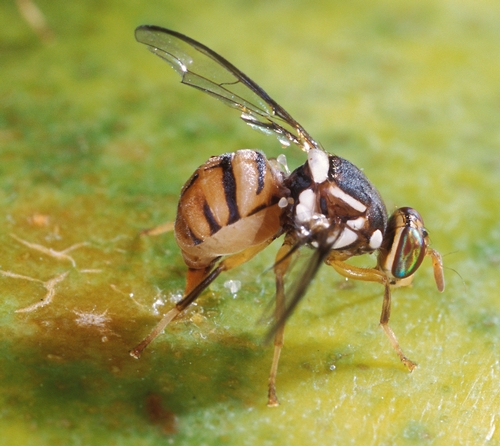Roger Vargas is in the thick of fruit-fly research and he probably wishes those insects would thin out.
He's a research entomologist at the USDA-ARS Pacific Basin Agricultural Research Center in Hilo, Hawaii. For those who don't deal with acronyms, that's the Agricultural Research Service of the U.S. Department of Agriculture.
Vargas' key research interests include mass rearing, sterile insect technique, ecology, biological control, and area-wide integrated pest management (IPM) of fruit flies.
Vargas will be at the University of California, Davis, on Wednesday, Feb. 9 to speak on "Area-Wide Fruit Fly Programs against Fruit Flies in Hawaii, French Polynesia and California." His talk, sponsored by the UC Davis Department of Entomology and part of its winter seminar series, is set from 12:10 to 1 p.m. in 1022 Life Sciences Addition, corner of Hutchison and Kleiber Hall drives.
The lecture will be webcast live at http://uc-d.na4.acrobat.com/ucsn1/ and then archived here. He plans to cover current area-wide management programs against Bactrocera fruit flies in Hawaii, French Polynesia, and California.
"Fruit flies (Diptera: Tephritidae) are among the most economically important pests attacking soft fruits worldwide," Vargas says. "Bactrocera is a tephritid fly genus of at least 440 species distributed primarily in tropical Asia, the south Pacific, and Australia. However, these species have been spreading throughout the world at an alarming rate over the past 15 years.
"Oriental fruit fly (B. dorsalis) has become established and is spreading throughout French Polynesia.
"Carambola fruit fly (B. carambolae) is established and spreading throughout areas of South America.
"B. invadens, B. latifrons and melon fly (B. cucurbitae) are established and spreading in Africa.
"The peach fruit fly (B. zonata) is established and spreading in Africa and the Mediterranean region."
In fact, Vargas says, every year Bactrocera species are accidentally introduced from various parts of the world into California, requiring expensive treatment programs.
For an up-close and personal look at a fruit fly, check out the USDA-ARS photo of a Oriental fruit fly laying eggs in a papaya (below).
Coming soon...to a fruit near you...
Attached Images:

Roger Vargas

Fruit Fly